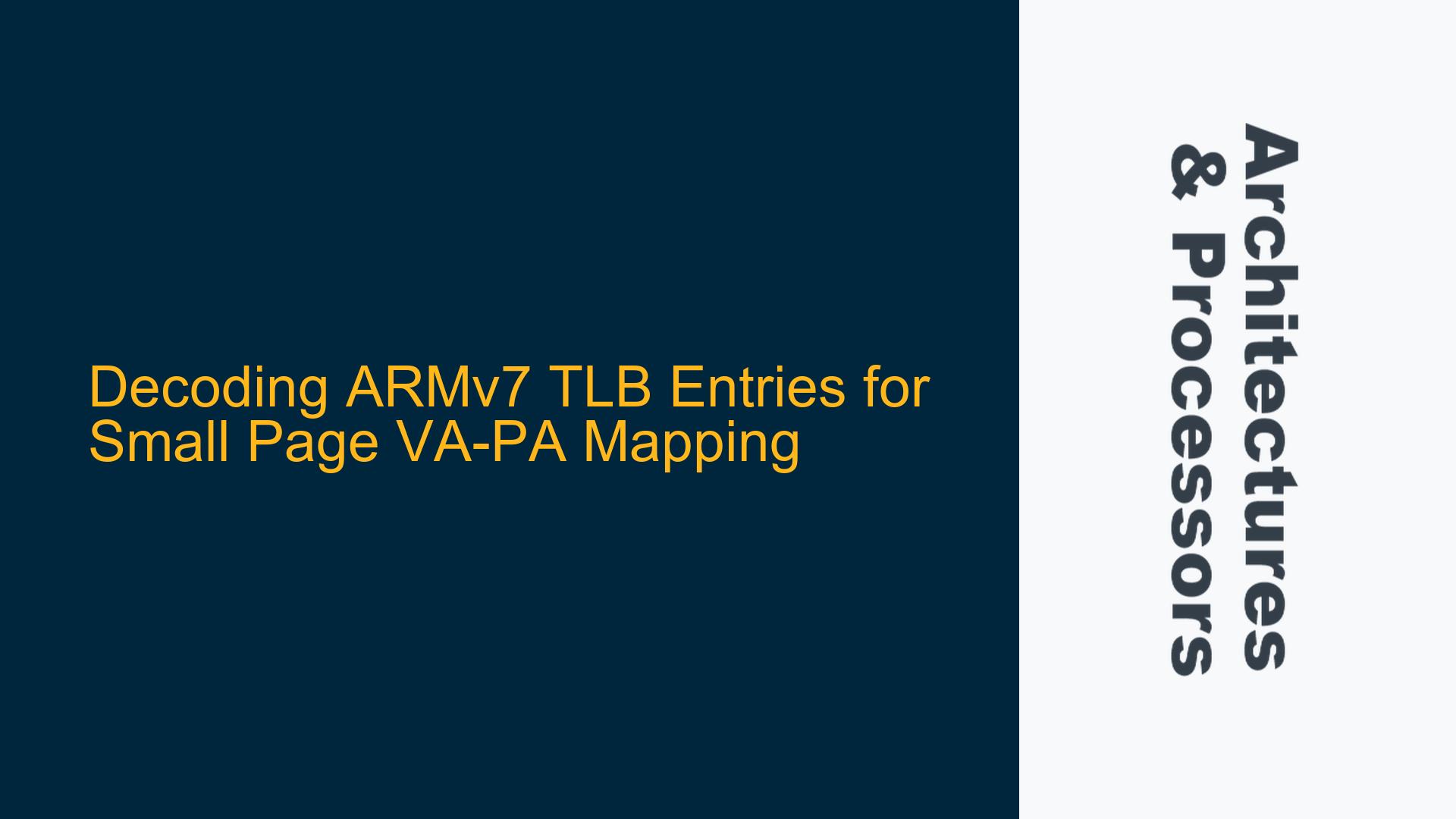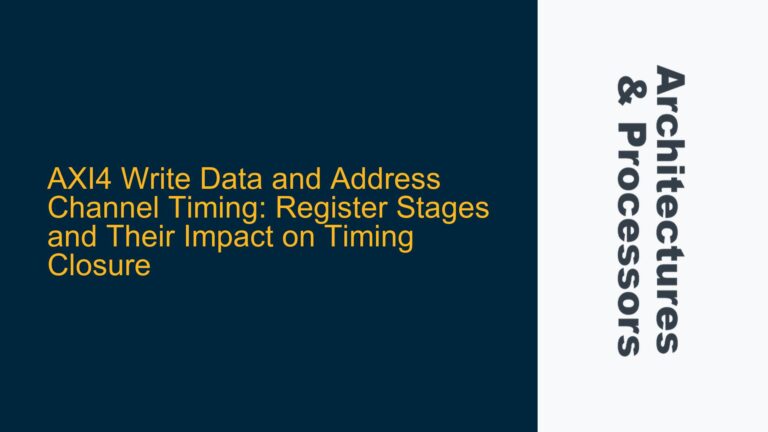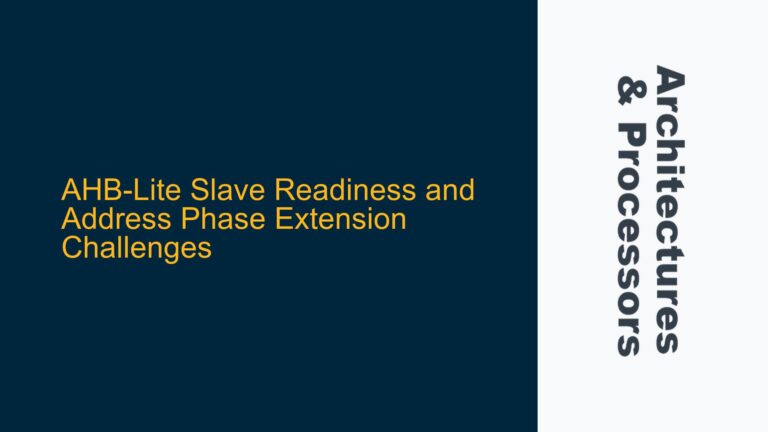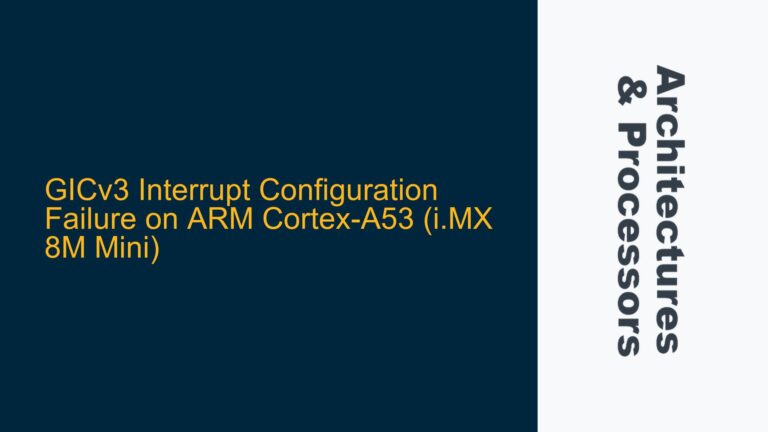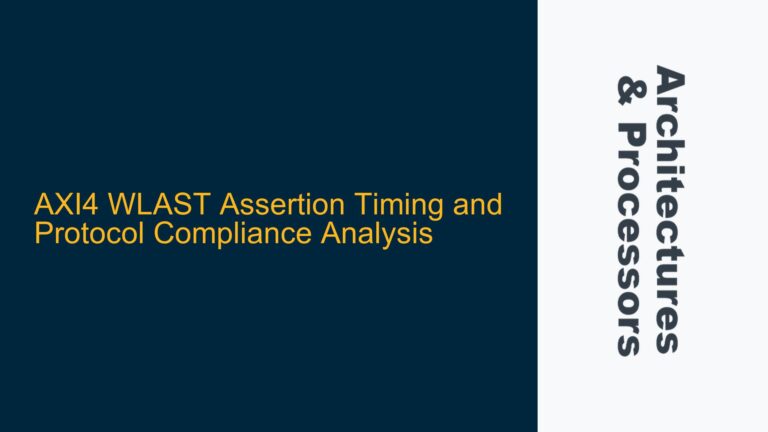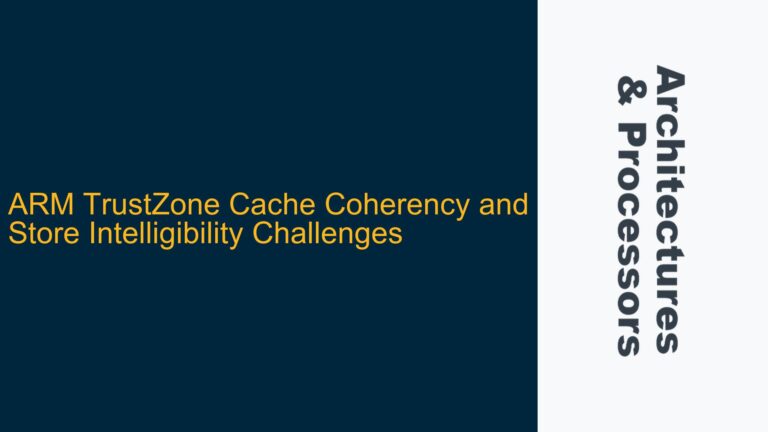ARM Cortex-A5 TLB VA-PA Mapping Challenges with Small Pages
The ARM Cortex-A5 processor, based on the ARMv7 architecture, utilizes a Translation Lookaside Buffer (TLB) to accelerate virtual-to-physical address translation. The TLB is a critical component of the Memory Management Unit (MMU), and its proper functioning is essential for efficient memory access. However, decoding TLB entries, especially for small pages (4 KB), can be challenging due to the compact representation of virtual addresses (VA) within the TLB descriptor format. Specifically, the TLB entry for a small page contains only 15 bits of VA information, while the full VA requires 20 bits for small pages. This discrepancy raises questions about how to accurately reconstruct the full VA from the TLB entry and how the TLB index factors into this decoding process.
The core issue revolves around understanding how the 15-bit VA field in the TLB descriptor, combined with the TLB index, maps to the full 20-bit VA required for small pages. This mapping is not explicitly documented in the ARM Cortex-A5 Technical Reference Manual (TRM), leading to confusion during debugging and analysis. Additionally, the relationship between the TLB index and the VA bits must be clarified to ensure accurate address translation and debugging of MMU-related issues.
TLB Descriptor Format and VA-PA Mapping Ambiguity
The ARM Cortex-A5 TLB descriptor format, as described in the TRM, provides fields for attributes such as TEX, AP, Bufferable, Cacheable, and Shareable. However, the VA field is only 15 bits wide, which is insufficient to represent the full 20-bit VA required for small pages. This limitation implies that the remaining bits must be derived from other sources, such as the TLB index or implicit assumptions about the memory hierarchy.
The TLB index, which identifies the specific entry within the TLB, plays a crucial role in reconstructing the full VA. However, the exact mechanism for combining the TLB index with the 15-bit VA field is not clearly defined in the documentation. This ambiguity can lead to misinterpretation of TLB dumps and incorrect debugging conclusions. For example, if the TLB index is 0x32 and the VA field is 5, it is unclear how these values combine to form the full VA of 0xB2000.
Furthermore, the page size directly impacts the VA-PA mapping. For small pages (4 KB), the lower 12 bits of the VA and PA are identical, as they represent the offset within the page. However, the upper 20 bits of the VA must be correctly mapped to the corresponding PA. The TLB descriptor’s 15-bit VA field must therefore be extended to 20 bits using additional information, such as the TLB index or context-specific knowledge.
Reconstructing Full VA from TLB Entries and Index
To accurately decode the full VA from a TLB entry, the following steps must be taken:
-
Determine the Page Size: Confirm that the page size is 4 KB (small page) by examining the TLB descriptor attributes. This ensures that the lower 12 bits of the VA and PA are identical and that the upper 20 bits must be reconstructed.
-
Extract the TLB Index and VA Field: Identify the TLB index and the 15-bit VA field from the TLB descriptor. The TLB index is typically derived from the position of the entry within the TLB, while the VA field is explicitly stored in the descriptor.
-
Combine the TLB Index and VA Field: Use the TLB index to extend the 15-bit VA field to 20 bits. The exact method for combining these values depends on the TLB organization and the specific implementation of the Cortex-A5 MMU. One possible approach is to treat the TLB index as the upper bits of the VA, with the 15-bit VA field representing the lower bits. For example, if the TLB index is 0x32 and the VA field is 5, the full VA might be constructed as (0x32 << 15) | 5, resulting in 0xB2000.
-
Validate the Reconstructed VA: Compare the reconstructed VA with known memory mappings or use debugging tools to verify its accuracy. This step is crucial to ensure that the decoding process is correct and that the TLB entry accurately represents the intended VA-PA mapping.
-
Handle TLB Misses and Inconsistencies: If the reconstructed VA does not match expected values, investigate potential issues such as TLB misses, incorrect TLB entries, or MMU configuration errors. Use hardware debugging tools to inspect the TLB and MMU state and identify the root cause of the discrepancy.
By following these steps, developers can accurately decode TLB entries and reconstruct the full VA for small pages, enabling effective debugging and optimization of ARM Cortex-A5 systems. This process requires a deep understanding of the TLB descriptor format, the role of the TLB index, and the relationship between VA and PA in the context of small pages.
Implementing TLB Decoding and Debugging Best Practices
To ensure reliable and efficient TLB decoding, developers should adopt the following best practices:
-
Leverage ARM Documentation: Carefully review the ARM Cortex-A5 TRM and other relevant documentation to understand the TLB descriptor format and the role of the TLB index. While the documentation may not explicitly describe the VA decoding process, it provides essential context and clues for reconstructing the full VA.
-
Use Debugging Tools: Utilize hardware debugging tools, such as JTAG probes and ARM DS-5, to inspect the TLB and MMU state. These tools can provide real-time insights into TLB entries, VA-PA mappings, and MMU configuration, enabling accurate debugging and validation of TLB decoding.
-
Validate with Known Mappings: Compare reconstructed VAs with known memory mappings to verify the accuracy of the decoding process. This validation step is critical for identifying and correcting errors in TLB decoding and ensuring reliable system operation.
-
Document Decoding Procedures: Maintain detailed documentation of TLB decoding procedures, including the method for combining the TLB index and VA field. This documentation serves as a reference for future debugging and ensures consistency across development and testing efforts.
-
Collaborate with ARM Support: Engage with ARM support and the developer community to clarify ambiguities and share insights. Collaborative efforts can lead to a deeper understanding of TLB decoding and the development of best practices for ARM Cortex-A5 systems.
By adopting these best practices, developers can effectively decode TLB entries, reconstruct full VAs,
